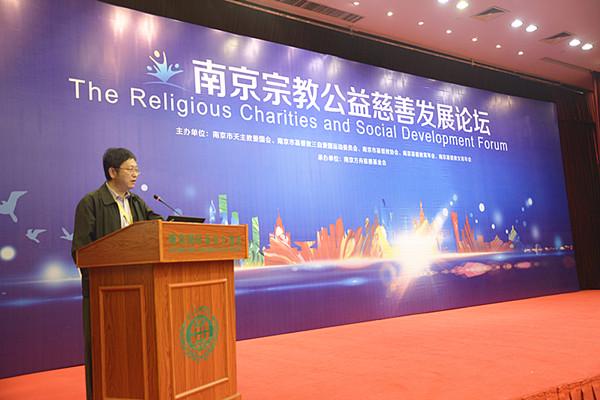Andrews, an American religious historian, once said, "religion is the mother of philanthropy." Religions always advocate aiding the world, saving people and doing good. These are the traditions of religious organizations. Although China has a long history of religious charities, religious charities are still in the early stages of its development.
Professor Chen Youhua, the director of Nanjing Air Charity Foundation, points out in the first forum on the religious charities and social development held in Nanjing that the religious charitable community is the best candidate to provide resources and lessons in the field regarding the importance of charitable spirits and culture while it hasn't reached this so far.
Currently, there are five problems in religious charities: small scale, low participation rates, inadequate potential growth and sustainability, non-standard activities and mismanagement in some organizations.
He then analyzed the cause of the overall low levels of religious charities in China:
1. The legal law is imperfect and it's hard to register religious charitable organizations.
2. There is a lack of management and supervision mechanism for such institutions.
Religious charities lack effective management mechanisms in fund management, the related supervision mechanism and system guarantees on the operating level in financial management.
The religious charitable organizations don't have the internal and external operation mechanism to build them as "glass pockets".
3. Limited funds and a shortage of talents
Religious charities lack long-term plans and participation of professional talents.
4. For the Buddhist community, pilgrims are too many, while the followers are not enough.
5. The religious community is short of the enthusiasm and initiative to carry out charities.
6. The modern charity concept is lacking.
Due to the interruption and limitations placed by the authorities, the community lacks ideas and methods for charity.
7. Dilemmas of identity recognition and self-position emerge.
The best way to integrate into the society is to hold social charitable activities.
8. Stagnant transition.
Secularization has been a basic trend in religions today and religions have returned to the spiritual level after the Reformation and the establishment of the modern democratic nations. Countries gradually undertake more public responsibility once carried out by the religious community and some missions have done, which forces the religious charities to reposition themselves in society.
9. Theoretical research lags behind.
Compared to the charity career which rising entrepreneurs and philanthropists are promoting in recent years, the religious charities are weaker in innovation and development with an insufficient exploration and exploitation of the charitable resources available. Meanwhile, they have not completed the rational innovation in its theoretical system.
Chen adds that the efforts to improve this situation should be done in the legal system construction, changing ideas, supervision and management, industry self-discipline, team construction, education and social service.










